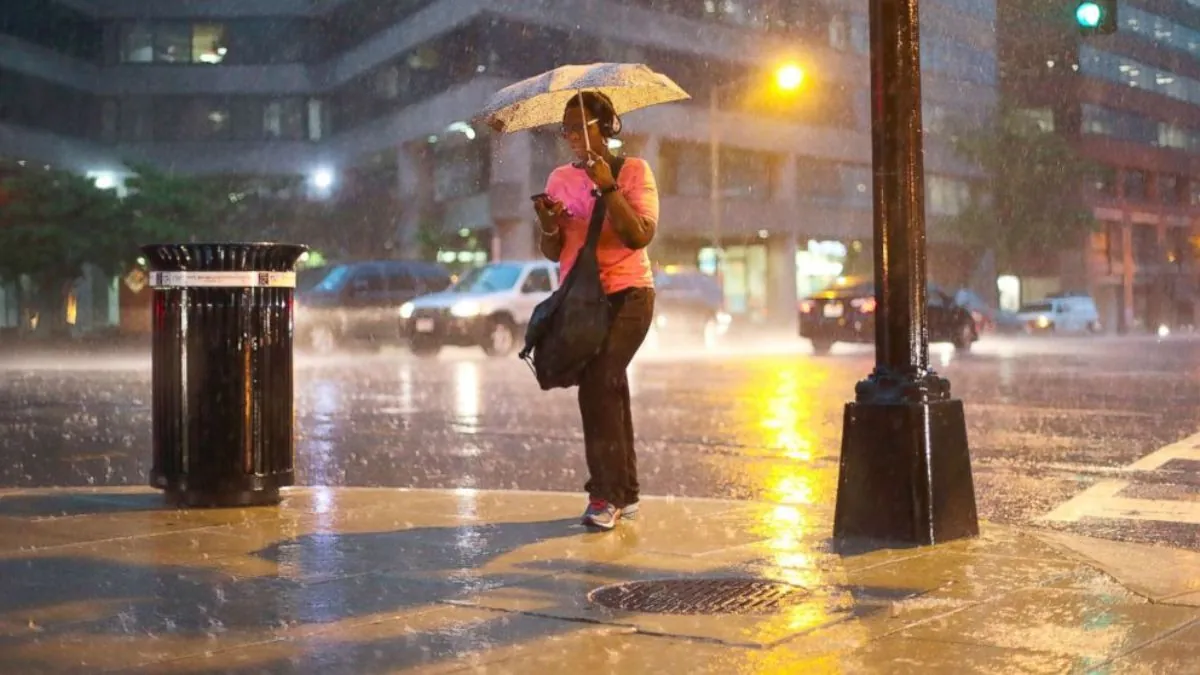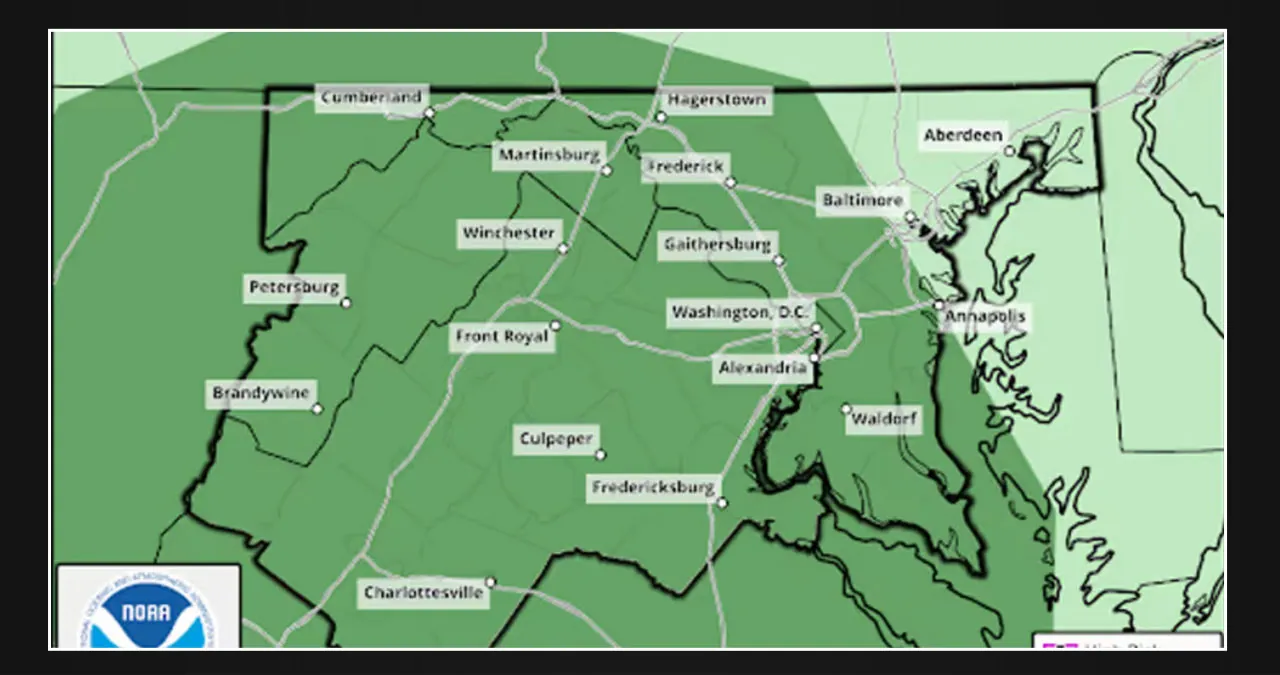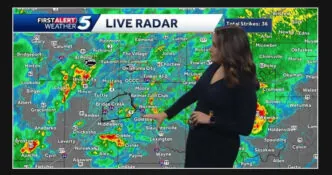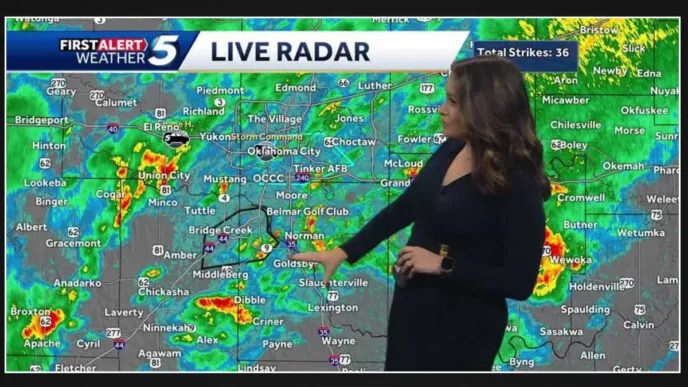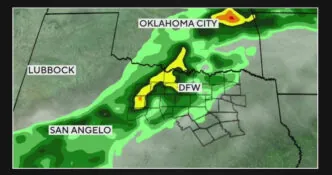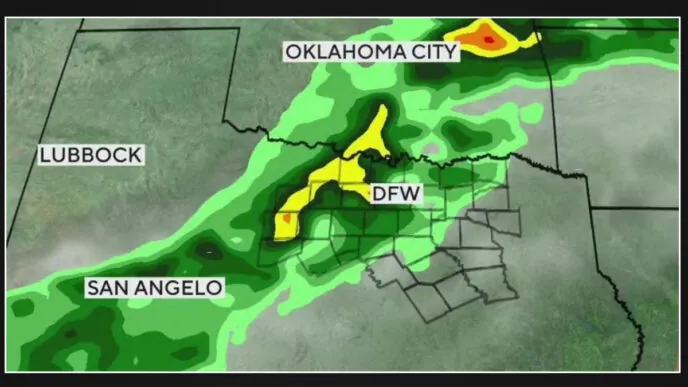The National Weather Service issued an updated weather alert on Wednesday at 5:10 p.m. The alert warns of strong thunderstorms in Saratoga and Washington counties until 6 p.m.
The weather forecast predicts that there will be wind gusts reaching speeds of up to 40 mph and hailstones the size of marbles, measuring 0.5 inches in diameter.
The weather service reported that a strong thunderstorm was detected near Fort Edward or Hudson Falls, moving east at a speed of 30 mph. They stated that the storm could bring gusty winds that may cause tree limbs to fall and unsecured objects to be blown around. There is also a possibility of minor hail damage to vegetation.
The alert has affected several areas, including Hudson Falls, Arlington, Salem, Manchester, Fort Edward, Manchester Center, South Glens Falls, Sunderland, Sandgate, Argyle, Glastenbury, Cossayuna, Beartown, Dunham Basin, Chiselville, Goose Island, Barnumville, Eagleville, West Rupert, and Fitch Point.
“If you are outdoors, it is advisable to seek shelter inside a building,” suggests the weather service.
Shielding yourself from approaching lightning: Expert safety guidelines
In the United States, lightning strikes occur approximately 25 million times every year, and most of these occurrences happen during the summer months. Sadly, the weather service reports that lightning takes the lives of about 20 people annually. The danger of lightning-related incidents increases as thunderstorms approach and peaks when the storm is directly overhead. However, the risk gradually decreases as the storm moves away.
To ensure your safety during a thunderstorm, it is important to consider the following recommendations:
1. Seek shelter indoors: Find a sturdy building or a fully enclosed vehicle to protect yourself from lightning strikes. Avoid open areas, tall trees, and metal objects that can conduct electricity.
2. Stay away from windows and doors: Lightning can travel through glass and metal, so it is best to stay away from windows and doors during a storm. Move to an interior room or basement where you are safe from potential flying debris.
3. Avoid using electrical appliances: Unplug electronic devices and avoid using landline phones or other electrical equipment during a thunderstorm. Lightning strikes can cause power surges that may damage your devices or pose a risk of electrocution.
4. Stay off water bodies: Avoid swimming, boating, or participating in any water activities during a thunderstorm. Water is a good conductor of electricity, and being in or near water increases the risk of being struck by lightning.
5. Wait for the storm to pass: If you are outdoors and unable to find shelter, it is best to wait for the storm to pass. Take cover in a low-lying area away from trees, poles, and other tall objects. Avoid seeking shelter under isolated trees or near metal structures.
Remember, thunderstorms can be dangerous, and it is essential to prioritize your safety by following these recommendations. Stay informed about weather conditions and seek shelter immediately when thunder and lightning are present.
Lightning Safety Plan:
-
- When venturing outdoors, it’s vital to establish a clear plan for seeking shelter in case of lightning.
- Monitor the sky for threatening signs and listen for the sound of thunder. If thunder is audible, it’s an indication that lightning is nearby.
- Seek a safe place to shelter, preferably indoors.
Indoor Safety Measures:
-
- Once you’re indoors, avoid using corded phones, electrical devices, plumbing fixtures, and stay away from windows and doors.
- Lightning can follow conductive pathways, and these precautions reduce the risk of electrical surges.
Wait for the all-clear:
-
- After the last lightning strike or thunderclap, wait at least 30 minutes before resuming outdoor activities.
- Lightning can strike even when a storm has seemingly passed, so exercise caution.
If you don’t have access to indoor shelter:
If you are caught outdoors during a thunderstorm and cannot find shelter indoors, there are several steps you can take to ensure your safety:
-
- Avoid open fields, hilltops, or ridge crests, as they expose you to greater lightning risk.
- Steer clear of tall, isolated trees and other prominent objects. In forested areas, stay close to lower stands of trees.
- If you’re with a group, ensure individuals are spread out to prevent lightning current from transferring between people.
- Camping in an open setting during a thunderstorm is strongly discouraged. If no alternative exists, set up camp in a valley, ravine, or other low-lying areas. Remember that a tent offers no protection against lightning.
- Do not approach water bodies, wet objects, or metal items. While water and metal don’t attract lightning, they conduct electricity effectively and can pose significant risks.
To summarize, being prepared and vigilant are your greatest allies when it comes to dealing with the danger of lightning. By adhering to these guidelines, you can greatly decrease the chances of experiencing incidents related to lightning and prioritize your overall safety.
Mastering wet roads: Safety tips for heavy rainfall
When heavy rain pours, the risk of flooding and treacherous roads increases. Here is a guide from the weather service on how to stay safe during downpours:
Be cautious of swollen waterways.
During heavy rain, it is important to avoid parking or walking near culverts or drainage ditches. The fast-flowing water in these areas can pose a risk of carrying you away.
Reduce your speed and drive with caution.
When it’s raining and the roads are wet, it’s important to slow down. Ease off the accelerator and allow your speed to decrease gradually. Avoid using the brakes abruptly, as this can cause your car to skid.
Choose your lane wisely:
When driving in the rain, it is advisable to stay in the middle lanes as water tends to accumulate in the outside lanes.
Visibility is crucial.
To improve your visibility during heavy rain, make sure to turn on your headlights. It is important to be cautious of vehicles that may be in your blind spots, as the rain can make it difficult to see clearly through your windows.
Be cautious of slippery roads.
During the first half hour after rain starts, it is important to exercise extra caution. This is because the combination of water, grime, and oil on the road surface can create a slippery condition.
Stay a safe distance away from large vehicles:
When driving, it’s important to maintain a safe distance from large trucks or buses. Their tires can create a significant amount of spray that can impair your vision. If you find yourself behind one of these vehicles, be sure to keep a safe following distance. Additionally, if you need to pass them, do so quickly and with caution to ensure the safety of both yourself and other drivers on the road.
Mind your windshield wipers.
When your wiper blades are overloaded, they can make it difficult to see clearly. If heavy rain is affecting your visibility, it’s important to pull over and wait for the conditions to improve. You can find shelter at rest areas or other protected areas until the rain subsides.
If you are left with no choice but to stop by the roadside, make sure to park your vehicle as far off the road as you can, preferably beyond the guardrails. It is important to keep your headlights on and activate the emergency flashers to inform other drivers about your presence.
To ensure your safety and well-being during heavy rain, it is crucial to follow these safety measures. Stay informed about the weather conditions and listen to the advice given by local authorities. This will help you make your journey safe and sound.
This Article Includes

